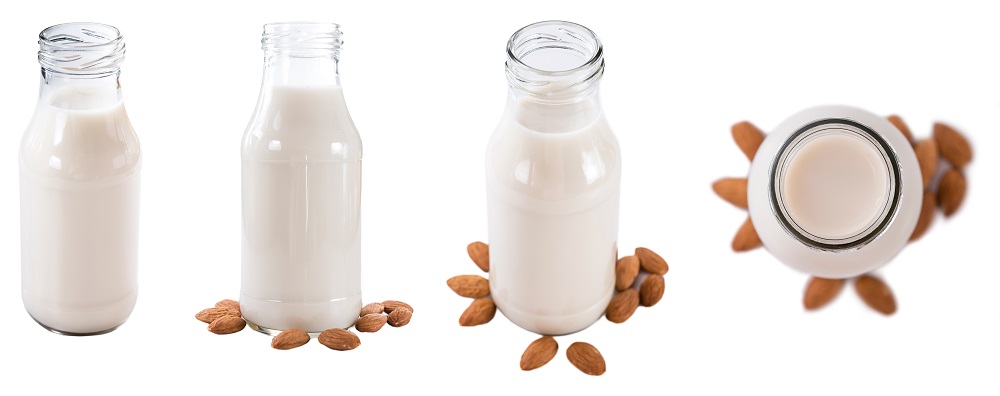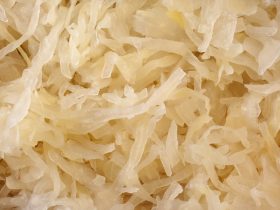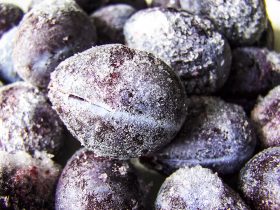Almond milk is a dairy-free alternative for those who are lactose intolerant or have other dietary restrictions. It is also suitable for cooking and baking since almonds are low in sugar, phosphorus, and calories. Additionally, almond milk is rich in calcium as well as vitamin D and vitamin E.
To keep almond milk fresh, it is typically stored in the refrigerator for several days. Although manufacturers do not recommend storing almond milk in the freezer, doing so can extend its shelf life without compromising the quality. However, there are a few important things to keep in mind when freezing almond milk like texture change.
Can You Freeze Almond Milk?

Homemade and store-bought almond milk can both be frozen using the same methods. Pour the milk into ice trays or a freezer-safe container. Date and label the container before storing in the freezer. Almond milk can be frozen for up to two months. However, almond milk near its expiry date may only last a few days or weeks. When thawed past the two-month time period, the almond milk may be spoiled and smell unpleasant, taste sour, turn yellowish, or look separated.
Thawing Almond Milk
Thawed almond milk will only have a shelf life of about 3 to 5 days before spoilage as opposed to about a week when stored only in the refrigerator. There are also other possible changes in its form and appearance when freezing almond milk.
Almond milk undergoes biochemical changes when frozen, which ultimately changes its color, texture, and flavor. However, the almond milk’s nutritional value will remain unchanged throughout the freezing and thawing process, which is why freezing almond milk is so attractive.
Why Does the Texture Change?
Almond milk is composed of tiny almond components within a solution of about 88% of water. These components (cellulose, fibre, fat, and protein) have various freezing points which are evident by the separation that occurs when almond milk is frozen.
The different layers freeze separately and is clearly visible when almond milk is taken out of the freezer to thaw. When consumed in this state, the texture will be different and inconsistent when compared to the creamy, smooth texture of almond milk in its regular state.
Is There Any Way to Address the Texture Change?
When almond milk is store-bought, there is a high chance that it contains emulsifiers which manufacturers add in order to help the different ingredients recombine. It is best to either stir, shake, or blend the frozen almond milk after thawing to have a similar texture to its original state.
If almond milk is homemade, adding an emulsifier like sunflower seeds can help with the change in texture after defrosting the almond milk. Sunflower seeds act as a lecithin which helps keep the oil and fats components of almond milk suspended in the water used when making almond milk. This way, blending or mixing the almond milk after defrosting will make the texture similar to what your almond milk was like before being frozen.
How to Properly Freeze Almond Milk
The three most popular ways to freeze almond milk are in ice cube trays, in its original container, or an airtight container.
Ice cube trays are one of the ways to portion almond milk but also make the texture change less noticeable when defrosting. Pour the almond milk into the ice cube about ¾ of each mold in order to leave room for expansion. After solidifying, transfer the almond milk cubes into an airtight plastic bag and back into the freezer.
You can also opt to freeze the almond milk in its original packaging. If the container is unopened, it has minimum exposure to oxygen, and maintains the almond milk’s flavor and freshness even after thawing.
If the almond milk has already been opened or for some reason, you cannot freeze it in its original container, you can also freeze it in an airtight container. When choosing a container, similar to the ice cube method, make sure to leave some space at the top of the container. Since almond milk is made up of around 88% water, it will expand in the freezer – meaning, do not use glass as it will explode.
How to Defrost Almond Milk
The thawing process, regardless of which freezing method you made use of, should always be done in the refrigerator. When left at room temperature to defrost, the separation effects caused by freezing could get worse and also accelerate the spoilage of your almond milk.
Transfer the frozen almond milk to the fridge for a few hours, blend, blitz, or vigorously stir, and then consume. If needed the next day, almond milk can be defrosted in the fridge over night as well.
If the frozen almond milk is to be used in a recipe or a milkshake, there may not be a need to defrost the almond milk.
Otherwise, you can speed up the process by putting a container with the frozen almond milk into a different bowl with warm water.
Can You Refreeze Almond Milk?
It is not recommended to refreeze almond milk due to the separation that occurs in the freezer. Each time you freeze almond milk, the components become more and more distinguished from each other. You should make sure to take out as much frozen almond milk as you need and leave the rest in the freezer.
Is Freezing Almond Milk Safe?
Frozen almond milk is still safe for consumption for 3 to 5 days after defrosting. The nutritional value of thawed almond milk remains unchanged after the freezing process.
How Long Can Almond Milk Be Frozen?
Almond milk can last for up to two months in the freezer without its quality being compromised. Any more than two months can cause more noticeable changes to the almond milk’s texture, taste, and color.
If you plan to use or consume the almond milk within this period, the defrosted almond milk should be used in baking, cooking, or consumed within 3 to 5 days. Any longer than this can result in the almond milk spoiling which will be noticeable by large clumps, an unpleasant smell, and sour taste.





Hi, I'm Dom
Dom Eats was started to help other people fall in love with food. While cooking can feel intimidating, it doesn't have to be.